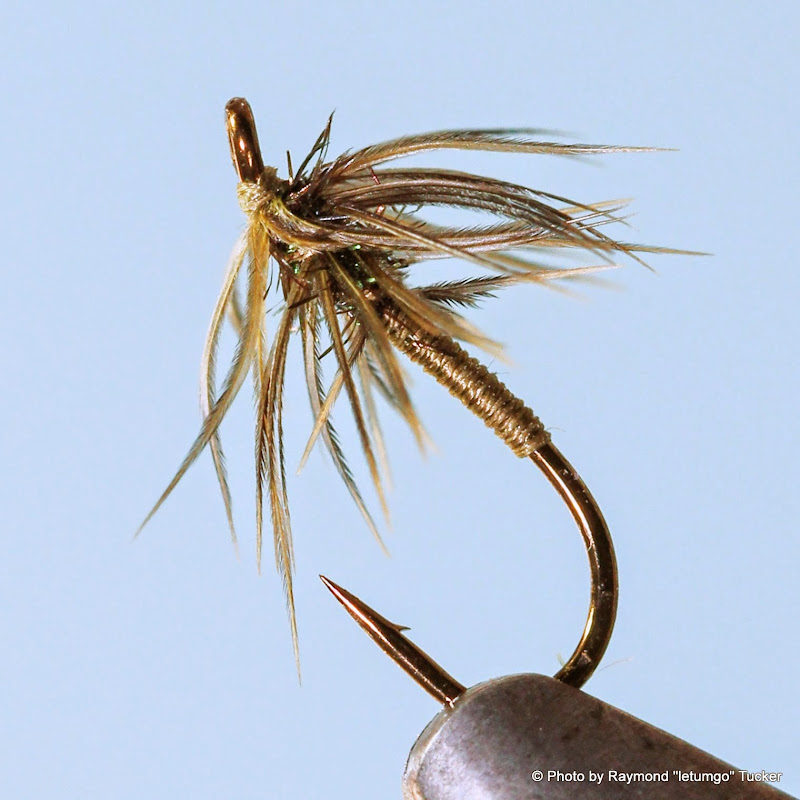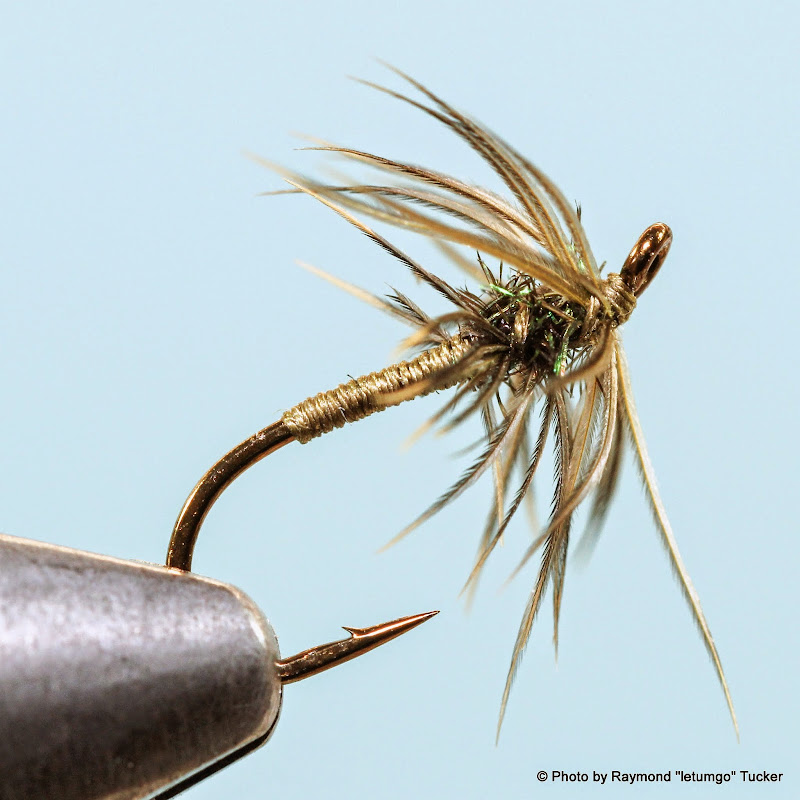Bob - I've tyed up a half dozen petite olive spiders, which I look forward to fishing soon.
I call this one, a "
Pickled Olive Spider"
Pickled (Picric) Olive Spider
Hook - Mustad R50 TUE (Size 16,
or smaller if you've got 'em)
Thread - Pearsall's Gossamer Silk (Olive/No. 16)
Hackle - Picric Dyed Starling Wing Coverlet Feather (thanks Bob)
Thorax - Single strand of Peacock Herl (Natural) - (
tyed in at the eye and wrapped to mid shank)
Abdomen - Pearsall's Gossamer Silk (Olive/No. 16)
Head - waxed thread and form a three turn whip finish.

 SBS Tying Instructions:
SBS Tying Instructions:
1) Mount hook in vice
2) Wax the last few inches of the tying silk, with a good tying wax. This will ensure silk grips the hook shank.
3) Attach the tying thread with three secure wraps. Leave a few inches of tag.
4) Select a coverlet feather from the starling wing, and prepare the feather by stripping off the basal fluff. Grip the feather by the center stem and mount it on the hook with a single firm wrap. The tip of the feather should be facing out over the eye of the hook. DO NOT TRIM OFF THE STEM...YET...
5) Pick a strand of peacock herl, and grip it roughly one-third of the way from the tip end. Point the butt-end out over the eye of the hook and secure it with a single firm wrap of thead. Now reposition the fingers on your left hand and grab hold of the tag end of the silk, along with the feather center stem and the tip end of the peacock herl. Pull them gently, so they run parallel with the top of the hook shank.
6) Wrap the tying silk to the middle of the hook. Now trim off the tag ends of the silk, feather stem and tip of the peacock herl. The were left on, to help build up the front section of the fly.
7) Carefully wrap the peacock herl, in close touching turns, back to the midpoint of the shank. Secure with a single turn of silk, and trim or simply break off the excess.
8) Wrap the tying silk back to the bend of the hook and then forward to the midpoint again. The wraps are in very close touching turns.
9) Grasp the tip of the starling feather with hackle pliers. Stroke the fibers with your thumb and index finger, to separate the fibers and partially fold the fibers to one side. Wrap the feather back to the awaiting thread. Use open spiral wraps, and try to get three full turns, before running out of feather.
10) Secure the tip of the starling feather, and wrap the silk forward thru the abdomen in three open wraps. Wiggle the tying thread back and forth, to keep from trapping the feather fibers. If you look closely at the second photo, you can see one of the silk wraps, crossing the hackle stems.
11) Wax the tying silk, and form a three-turn whip finish head. Clip off the thread.
I make it sound complicated, but this is a very simple spider pattern. I like tying spiders in this way, to make them more durable. The peacock herl and starling feathers are quite delicate. By wrapping them from the eye to the bend, I am able to reinforce them with the tying silk, in an efficient manner. Give it a try. I think you will like the results.